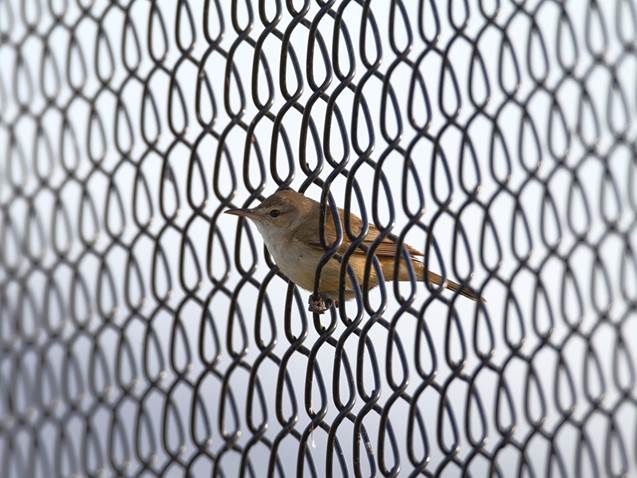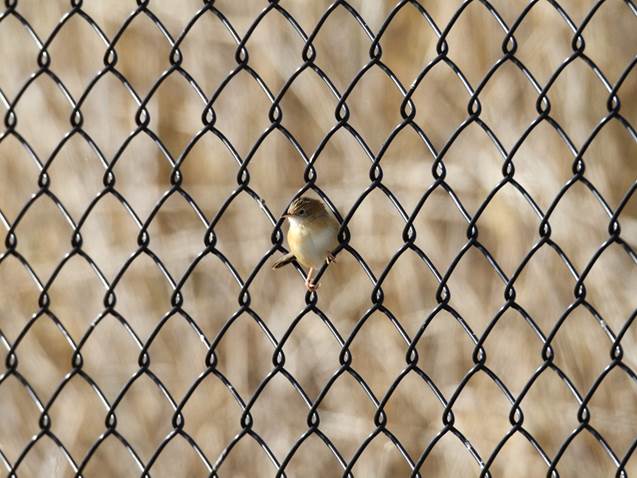The 3 are sufficiently different that if you get a good look there is usually no doubt. The difficulty arises from getting only a fleeting or obscured view. While they have different habits, for
example foraging levels, this does not take matters past the ‘probably’ stage. Unlike the reed warbler, the cisticola is much smaller than the interstice of a mesh fence.


From: Susan Robertson <>
Sent: Sunday, 3 March 2019 5:13 PM
To: John Harris <>
Cc:
Subject: RE: [canberrabirds] distinguishing reed birds.
Thanks a lot for the suggestions re the little bird in the reeds. Your suggestions make me think that the GHC is the most likely.
Susan
From: John Harris
Sent: Sunday, 3 March 2019 3:53 PM
To: 'Susan Robertson';
Subject: Re: [canberrabirds] distinguishing reed birds.
Living adjacent to reed beds, I take an interest in reed birds. Of the reed birds, the three most commonly seen around here are the Reed Warbler, the Little Grassbird and the Golden-headed Cisticola. They are all elusive and difficult to
distinguish with only a quick glimpse. But I have a system of telling them apart from only a short look. I use the ordinary House Sparrow as a reference point. The RW is, if anything, slightly larger than a sparrow. At a quick glimpse, it lacks the Sparrow
markings on the back and wings and is an altogether plainer bird, brownish above, buff or even creamy below. It flies up and back into the reeds more often than the other two. The LGB is about Sparrow size or a little smaller and skinnier. It has Sparrow-like
markings on the back, more olive-brown than a sparrow but that is not always discernible in a quick glimpse. It is light underneath with spots but you rarely get to see the spots. I am invariably looking down on it. The GHC is a smaller bird again, clearly
smaller than a sparrow, more the size of a thornbill. It has Sparrow-like markings on the back but it is yellower than the others, especially even more yellow in the breeding season. It is whitish below.
The real experts will be able to provide very specific distinguishing features, I am sure, but I rarely see them for long enough to study the exact feathering etc. My little system works for me.
Well I would suggest to you that any place in our area that has “Buff-banded Rails and another bird in the reeds” is highly likely to also have Golden-headed Cisticola,
especially if you saw something that could be it. Whether that is what you saw yesterday, only you can know (or not). Try again and I suggest you will know.
Philip
From: Susan Robertson
Sent: Sunday, 3 March, 2019 8:58 AM
To:
Cc: 'Rory Read
Subject: [canberrabirds] Buff-banded Rails
I’m happy to say that I was wrong that the Buff-banded Rails had left Hassett Park in Campbell. There are at least two still living there. There is another bird in the reeds there I’d love to have identified. I just caught a quick look
at it yesterday and wondered if it was a Golden-headed Cisticola.
Susan Robertson
Message protected by MailGuard: e-mail anti-virus, anti-spam and content filtering.
http://www.mailguard.com.au/mg
Report this message as spam

